Know Your Lore: The death of Sylvanas Windrunner
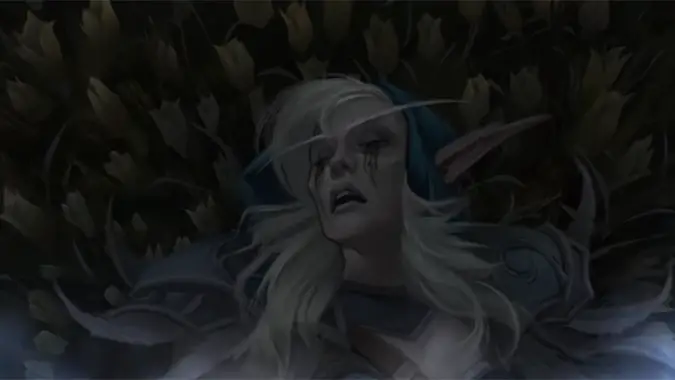
Sylvanas Windrunner is dead. But we knew that already. What we didn’t realize – and perhaps we still don’t have the entire answer to this question – is what exactly that means.
Who is Sylvanas Windrunner? We’ve been over that in spades – Ranger General of Silvermoon, devoted sister to Alleria and Vereesa, lover of Nathanos Marris. A stubborn woman who was steadfast in her purpose and her ideals. A human never should have been made a Ranger Lord according to…well, pretty much the entire population of high elves, but Sylvanas made it happen. One quel’dorei should never have been able to hold off an entire army of Scourge, but Sylvanas made it happen.
Until she didn’t. And that fateful moment was the end of Sylvanas Windrunner. In that moment, Sylvanas Windrunner died – but she wasn’t allowed to rest.
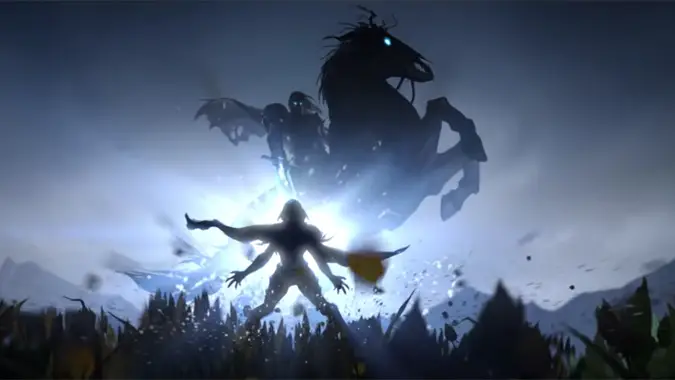
The banshee
In Warbringers: Sylvanas, we’re witness to the moment of the Ranger General’s demise. Arthas runs her through, but before she can pass on to whatever Azeroth’s approximation of the afterlife is, she’s torn back. She doesn’t get to see what’s on the other side. What she sees in that moment are three important things. First, she sees Arthas’ face the second he strikes her down. She’s staring him right in the eyes as he rips her soul from her body, the tears from that moment etched forever in her face, a frozen, steadfast reminder of what he’s done – and what she’s failed to do.
Because that’s the second thing she sees – her own corpse, and then the battlefield beyond. The Scourge are almost certainly going to conquer Silvermoon, and her allies are falling around her. She’s failed to protect them. She’s failed to protect herself, as evidence by the sight of her body, devoid of life and strewn on the ground like so much rubble.
The third and perhaps most important thing were the mother and child laying the grass – a family torn from the world too soon. It only reinforced her failure, in some ways. One could look at Sylvanas as if she were the mother, and the child was the entirety of Quel’thalas, of Silvermoon – a child who, despite her best efforts to protect them, fell just as certainly as she did.
A few weeks ago, I theorized that Sylvanas was in a state of stasis – neither alive nor dead, simply existing somewhere in between. The moment Sylvanas died should have been the end of her. Instead, Arthas stole her death from her, tore her spirit from her body and resigned her to that stasis. Sylvanas the banshee existed not as a former Ranger General, but in that moment. Forced to relive that moment of her own failure for eternity.
Or it should have been eternity, until it wasn’t. When the Lich King lost control of the Scourge after the Third War, Sylvanas suddenly found herself with something she hadn’t possessed in what felt like an eternity – free will. Which then raises a very important question: What does a creature stuck in a terrible moment of stasis do, when given the opportunity to move on?
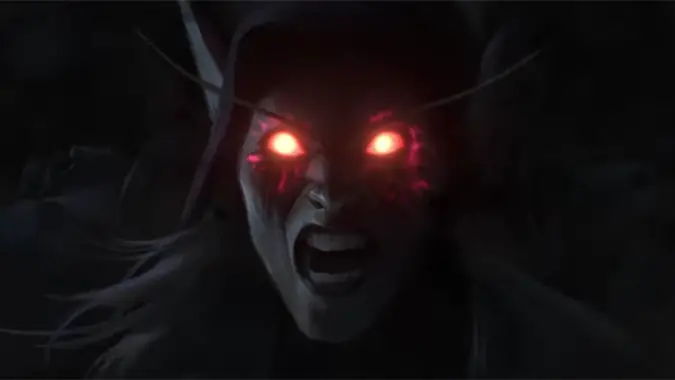
Vengeance
How much of Sylvanas’ memory still exists? Enough that she remembers her sisters, and remembers her time before her death. But the strongest memory, the most powerful memory – the moment she carries with her always — was that moment of her demise. And the thing that affected her most was the face of Arthas, staring down at her as he tore her asunder and cursed her to her present state of existence.
And that is why, when given a choice to do anything at all, Sylvanas immediately set out to have her revenge. She assaulted Lordaeron – Arthas’ former home – and claimed it for her own. She set out on a course of vengeance, her hatred ever affixed to the Frozen Throne and its new ruler.
But it wasn’t just revenge that Sylvanas was trying to accomplish. She was trying to undo everything Arthas had done to her.
When given the opportunity, one of the first things Sylvanas did was find her body and reclaim it. No more corpse on the ground, now she was wearing her own skin again, cold as it was. She gathered the other free-willed undead to her side, and gave them a banner to fight under. They weren’t the quel’dorei she once fought so valiantly to protect, but they were hers — and she would protect them, foster them, aim them like arrows in her quiver at the object of her hatred — Arthas, the Lich King.
But it didn’t undo what Arthas had done. None of it did. When the Lich King fell, Sylvanas went to the Frozen Throne, only to find another sitting on it. And there was no satisfaction from Arthas’ death. Vengeance had been dealt, her body had been reclaimed, she had people at her side…her purpose, such as it was, was complete. It was done, and so was she – which is why she flung herself from the Frozen Throne, her body shattered on the jagged saronite below.
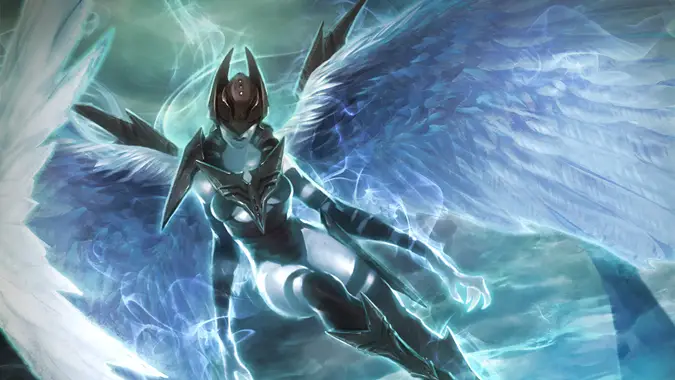
The pain beyond
She didn’t die, not immediately. The val’kyr saw to that, and showed her something important – a vision of the future, of how the people she left behind would almost certainly die. Garrosh Hellscream was simply using her people as expendable objects. Those Forsaken that weren’t fighting were throwing themselves into bonfires, rather than facing their executioners.
But the vision didn’t really affect her as intended. Her people were there for a purpose – arrows in her quiver, aimed at the Lich King’s heart. That purpose had been fulfilled. Shouldn’t that be the end of it? And she was pulled away from the val’kyr to somewhere else, dark and unidentifiable.
In that vast, empty darkness beyond her demise, Sylvanas experienced something she hadn’t experienced in a very, very long time. She began to feel. It was horrible.
Pain, regret, horror, fear, hopelessness, agony; is this what she was destined to experience, forever? It was unbearable, unrelenting. And when the val’kyr appeared to her again, and offered her a bargain – their souls bound to hers, in exchange for a return to her unlife, such as it was – she took it. After that, she dedicated herself to a different cause – extending the life of her people and securing a means for their continued existence. But although we may want to look at it as such, it wasn’t for any sense of underlying altruism.
The army of undead that surrounded and protected the Dark Lady was still hers, body and soul. But they were no longer arrows in her quiver, not anymore. They were a bulwark against the infinite. They were to be used wisely, and no fool orc would squander them while she still walked the world of the living.
The Forsaken are no longer arrows in the Banshee Queen’s quiver. They are a shield – her shield – against the vast expanse of nothing she knows lies just beyond her demise. As long as they are alive, they are fighting to protect her.
Stasis or not, as far as Sylvanas is concerned, the absence of feeling is far preferred to the pain of being alive.
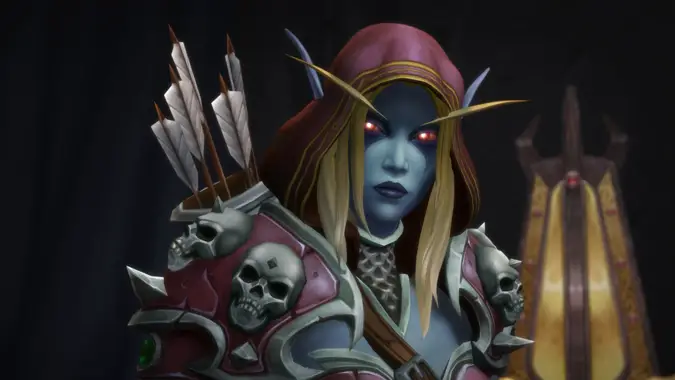
The phantom limb
In War Crimes, Sylvanas finally reunited with her sister Vereesa. Vereesa’s reappearance was a surprise, as was her wish to see Garrosh murdered in his cell. To do that, she needed the kind of undetectable poison Sylvanas and the Forsaken could most easily provide. But more surprising was what Vereesa fostered in her.
Sylvanas almost stumbled at the thought of not seeing Vereesa again tomorrow. A strange pang she should not have been able to feel, like the ache of a phantom limb, stabbed her, and she bit her lip against crying out.
Near the end of War Crimes, Sylvanas almost convinced Vereesa to come live with her in the Undercity, once the deed was done and Garrosh was dead. But what Vereesa didn’t know was that Sylvanas never intended for Vereesa to remain alive throughout this experience. Sylvanas wanted to kill her sister, raise her from the dead, and then the two of them could rule the Forsaken side-by-side.
It didn’t work out – Vereesa was reminded of the love she had for her sons, and warned Anduin at the last moment that Garrosh was about to be poisoned. She wrote a letter to Sylvanas explaining that she would not be joining her in the Undercity, nor could she go through with the plan they’d put together. Sylvanas was enraged. She set out into the woods, tore animals apart with her fingers in fury, dealt pain and death in turn until the ache in her heart ceased, and the chill grasp of coldness and peace clung to her once more.
The thing about a phantom limb is that the reason it’s a “phantom” is because it no longer exists. Sylvanas felt a pain akin to feeling and losing love – an echo, perhaps – but although it most certainly hurt, it wasn’t real. Because Sylvanas Windrunner is dead.
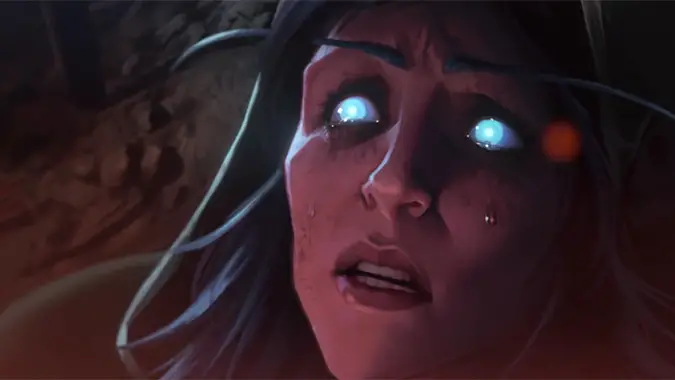
What are we, if not slaves to this torment?
That’s what Delaryn Summermoon saw in those final, fateful moments that Sylvanas showed to her. Delaryn asked her if she remembered being a defender of her people. Sylvanas showed her what she remembered. Arthas’ face. Her failure, represented by her own corpse, and the corpses strewn around her. The last moments of her life, captured in perfect, horrifying clarity – the moments that spurred every action she’s taken since. Because she can’t move on. She can’t look back. She can simply exist, suspended forever in that one horrifying moment – the moment that should have been her demise, but was not.
Life is pain. Hope fails. It is all Sylvanas – the echo that remains of her – remembers. It is all that drives her. It is all that she is, and all that she will ever be.
And in the face of that, Delaryn doesn’t recoil in horror. She doesn’t lash out in anger. She cries – not for herself, not for her people, but for Sylvanas. Because she sees everything Sylvanas is, and she isn’t a figure to be feared…she’s an object of abject pity. She’s made life her enemy, in the absence of her own. She has no hope, and therefore seeks to extinguish it for everyone.
Sylvanas has faced down horrors the likes of which one can scarcely imagine. Her death was an agony she cannot forget, seared into her memory as plainly as her final tears of anguish are seared into her skin. She exists with the knowledge that should she cease to do so, should she move beyond, the only thing that waits for her is unending, eternal pain.
But she cannot bear the tears of one lone Night Elf, shed in sympathetic grief for the curse of her own existence.
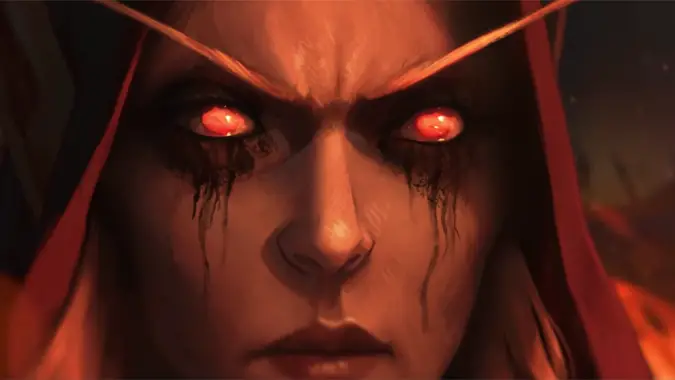
Teldrassil burns
There is no excuse, nor forgiveness, for what Sylvanas has done. It was a move of sheer spite, driven by another goal – shattering the unity of the Alliance, and paving the way for a Horde victory. But what Sylvanas forgets is that the Horde is honor-bound and honor-driven. There is no honor in slaughter – Saurfang sees it, protests it even. It’s only a matter of time before the rest of the Horde turns as well. We’ve seen this before, with the reign of Garrosh Hellscream, and it ended in open rebellion.
The thing is, there’s a big difference between Garrosh and Sylvanas. Garrosh simply murdered people outright when they didn’t fall in line. Corpses were strewn about the streets of Orgrimmar as examples. Sylvanas, on the other hand, can simply raise those corpses into much more loyal subjects, and strengthen her numbers by doing so. It’s not at all unlikely that that very thought has occurred to her.
Garrosh Hellscream wanted to conquer Kalimdor, and possibly all of Azeroth, for the Horde. He wanted to build the Horde into a war machine that would dominate and thrive. His vision of the Horde wasn’t how everyone else saw it, hence the rebellion – but it was all for the Horde nonetheless. The same can’t be said for Sylvanas. Because in the end, Sylvanas doesn’t care about the Horde – she doesn’t care about anyone. That would require feeling, and that’s something she simply doesn’t have the capacity to do.
What, then, is Sylvanas’ ultimate goal in all of this? It may very well be peace – but not the kind of peace everyone else imagines when they say the word. No, it’s the kind of peace that exists in a world without conflict. Without feeling. Without life. It’s the cold, absent grasp of undeath – unyielding and unchanging. Neither alive nor dead, simply existing, purposeless and unfeeling in an absence of want, need, or desire.
We’re going to have to deal with that, sooner or later — that is, if Sylvanas’ actions don’t end in the death of us all. Which may be exactly what she’d like to see.
Please consider supporting our Patreon!
Join the Discussion
Blizzard Watch is a safe space for all readers. By leaving comments on this site you agree to follow our commenting and community guidelines.
 @Shadesogrey
@Shadesogrey



